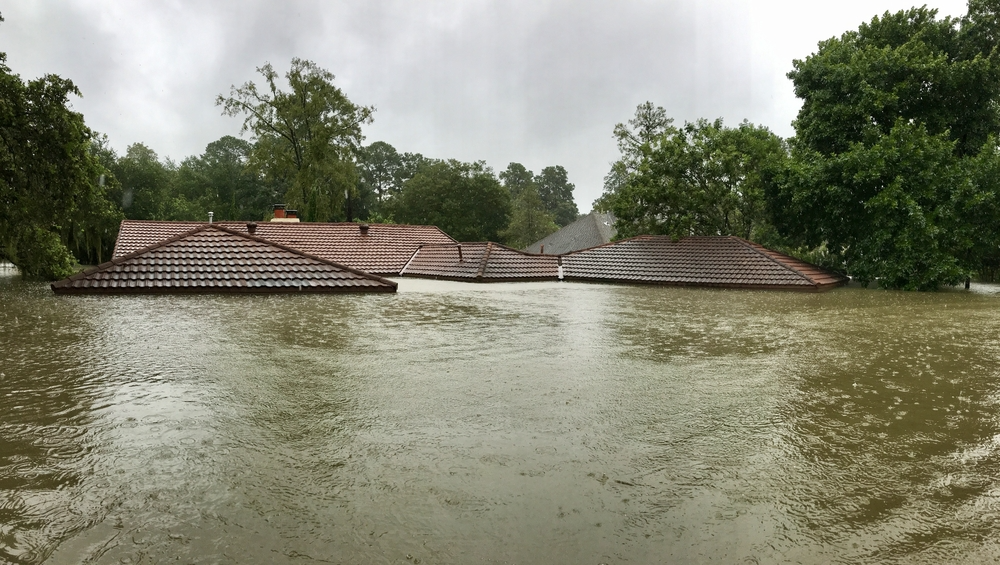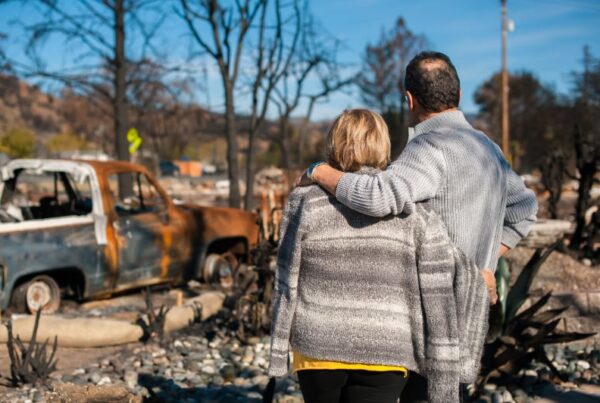Overwhelmed by Property Damage in Texas?
Has a Texas storm or accident left you with serious property damage? If you’re feeling overwhelmed by a torn-up roof after a hailstorm or a wrecked fence from a careless driver, you’re not alone. Texas residents face these situations frequently – from Gulf Coast hurricanes to North Texas hailstorms – and it can be heartbreaking to see your home or business harmed. We understand how stressful it is: dealing with insurance adjusters, cleaning up debris, and worrying about the costs. You might be asking yourself, what now?We often see families in Texas picking up the pieces after disasters, feeling unsure of their rights or how to get help. The good news is that Texas law provides ways to recover from property damage, whether it’s caused by natural disasters, accidents, or someone’s negligence. In the following guide, we’ll break down what you need to know about Texas property damage claims – in plain English – so you can protect your rights and get your property restored.
At JCE Law Group, we’re here to support you through every step—not to pressure you, but to make sure you understand your legal rights and feel confident moving forward. If you have questions, we offer a free, no-obligation consultation. Call our team today at 504-754-5884.

Texas Property Damage Laws Explained
Texas law offers protections and clear processes for those dealing with property damage. At its core, Texas property damage claims fall into two categories: insurance claims (for things like storm damage) and liability claims against someone who caused the damage through negligence. Let’s break that down in plain English:
-
Insurance Claims (First-Party Claims): If a Texas storm (like a hurricane or hailstorm) wrecks your home, you’ll likely turn to your homeowner’s insurance. Texas insurance laws require insurers to handle claims promptly and fairly. For example, under the Texas Prompt Payment of Claims Act (Texas Insurance Code Chapter 542), an insurance company must quickly acknowledge your claim, investigate, and decide on it. Usually they have to accept or reject your claim within 15 business days after getting all needed documents. If they approve it, they must pay you within 5 business days of notifying you. These timelines help prevent the frustrating wait that many homeowners face. Texas also prohibits insurance companies from acting in “bad faith” – in simple terms, that means an insurer can’t unreasonably delay or deny a valid claim. If they do, they could owe you extra damages (for instance, if an insurer delays payment more than 60 days past the info receipt, they may owe 18% annual interest on the claim amount as a penalty).
-
Negligence Claims (Third-Party Claims): If your property was damaged by someone else’s carelessness – maybe a neighbor’s tree trimming went wrong and crashed through your roof, or a driver plowed into your fence – you might have a negligence claim against that person (or their insurance). Negligence means someone failed to act with reasonable care, and as a result, they caused damage. In Texas, you can demand that the negligent party pay for repairs or losses. Often, their liability insurance (like auto insurance or business insurance) will step in. Legal jargon check: “Liability” just means legal responsibility. Texas law gives you the right to sue for property damage caused by negligence, but there’s a time limit (called a statute of limitations). In Texas, that deadline is generally two years from the date of the damage to file a lawsuit (Tex. Civ. Prac. & Rem. Code § 16.003). That means if you wait longer than two years, you could lose your chance to have a court hear your case. So if you’re dealing with serious damage someone else caused, don’t wait too long to explore your legal options.
Another important Texas-specific rule: if the property damage happens during a widespread disaster, state authorities may give some leeway. For example, if a hurricane hits and it’s officially declared a catastrophe by the Texas Department of Insurance, insurers get a brief extension on claim deadlines (usually an extra 15 days) to cope with the high volume of claims. But overall, the law is on your side to ensure a timely resolution.
Understanding the process and your rights can make a huge difference. Next, we’ll walk through what actually happens after the damage – step by step – so you know what to expect when filing a Texas property damage claim.
Timeline for a Texas Property Damage Claim
Every case is unique, but most Texas property damage claims follow a similar journey. Here’s a simple step-by-step timeline from the incident to resolution:
-
Damage Occurs – Safety First: The moment disaster strikes – whether it’s a lightning-sparked attic fire or a car crashing into your storefront – make sure everyone is safe. Call 911 if needed. Once immediate dangers are under control, start documenting the damage. We often see homeowners take photos or videos right away – this evidence is incredibly helpful later on.
-
Notify Your Insurer or the At-Fault Party: Texas policies usually require prompt notice to your insurance company if you’re filing a claim. Don’t delay – call your agent or insurer as soon as you can. If someone else caused the damage (like a driver hitting your property), you might also notify their insurance. For major incidents, especially car accidents, get a police report as well.
-
Investigation and Estimates: After you report a claim, an insurance adjuster will investigate. They may inspect the damage in person or ask for photos/receipts. It’s okay to get your own repair estimates too, so you have a comparison. Texas law compels insurers to investigate promptly – they typically must acknowledge your claim and request any additional info from you within the first 15 days of receiving notice. During this stage, be prepared to answer questions and provide documents (like proof of ownership or repair estimates).
-
Claim Decision: Once the insurer has what they need, they should make a decision. By Texas law, they often have about 15 business days after receiving all required documents to either approve or deny your claim. Sometimes, if they need more time (for instance, to investigate complex damage), they must send you a written explanation and can take up to 45 more days – but they have to keep you informed. If your claim is approved, good news: Texas requires payment pretty quickly – within 5 business days of approval, you should receive the funds (or directly paid repairs). If it’s denied or you get a lowball offer, the insurer must explain why. Don’t be discouraged – you have the right to challenge a denial or a too-low payment.
-
Resolution or Next Steps: If the claim payment covers your costs, you can proceed with repairs and life moves on. But if you’re unhappy with the outcome (claim denied or not enough money), you have options. You can negotiate further with the insurance company, provide additional evidence, or use the policy’s appraisal process (kind of like a second opinion on the damage cost). If that fails, this is when consulting a Texas property damage attorney becomes crucial. An attorney can step in to negotiate, and if needed, file a lawsuit. Remember the two-year lawsuit deadline for property damage in Texas – the clock starts from the date of the incident (or from when an insurance company breaches its contract or duty). Lawsuits are a last resort, but sometimes they’re necessary to get fair treatment.
Throughout this timeline, keep good records. Save emails, letters, and notes of phone calls with the insurance adjuster or the other party. That documentation can be a lifesaver if disputes arise.
Now that we’ve covered the legal basics, let’s talk about resolving these claims and why getting the right help can make a difference.
Resolving Property Damage Claims in Texas
Facing a property damage claim can feel like an uphill battle, but there are clear paths to resolution. Here’s how you can work toward a successful outcome:
Communication is Key: Start by keeping open communication with your insurance adjuster or the at-fault party’s insurer. Provide any information they need promptly. Be polite and persistent – check in on the status of your claim regularly. Sometimes a simple follow-up call can speed things up.
Documentation and Estimates: Make sure you have detailed documentation of all damage and losses. This includes photos, a list of damaged items or parts of the property, and repair estimates from contractors. For example, if a storm punched a hole in your roof, get a written quote for the repair. The more evidence you have, the harder it is for an insurer to dispute your claim.
Understanding Your Policy and Coverage: If it’s an insurance claim, read your policy (or have someone like an attorney or public adjuster review it) to know what’s covered. Texas homeowners policies often cover wind and hail, for instance, but flood damage is typically excluded unless you have separate flood insurance. Knowing your coverage limits and deductible (the amount you pay out-of-pocket first) will set realistic expectations for the payout.
Negotiation and Settlement: If the initial offer from an insurance company doesn’t cover your costs, you can negotiate. Provide receipts, contractor opinions, or independent appraisals to support a higher amount. Keep a professional tone and reference any evidence you’ve gathered. Many claims can be settled through calm but firm negotiation. Texas consumers have the right to ask for clarification on how the insurer calculated the payment – use that right if numbers aren’t adding up.
Escalate When Necessary: Sometimes, despite your best efforts, an insurer might deny a valid claim or severely underpay. We often see this when insurers cite technicalities or argue the damage isn’t covered. If you hit a dead end, don’t give up. You can escalate by filing a complaint with the Texas Department of Insurance (TDI) – they will review the issue and sometimes help mediate. Also, consider getting legal advice at this point. A letter from an attorney can motivate an insurer to take your claim more seriously. And if needed, you can take legal action for breach of contract or bad faith. Knowing that Texas law can impose penalties on insurers (for example, 18% interest for late payments beyond 60 days) gives you some leverage – insurers know they could owe more if they don’t play fair.
Why JCE Law Group is a Smart Choice
Choosing the right help can turn a frustrating property damage saga into a manageable process. So, why might JCE Law Group be a smart choice for Texas property damage claims? We often see people hesitate to involve an attorney because they worry it will be too aggressive or costly. But our approach at JCE Law Group is different – it’s about guidance and support, not hype.
-
Experience with Texas Storms and Disasters: Our team has guided clients through claims after hurricanes on the Gulf Coast, hailstorms in Central Texas, and even the 2021 winter freeze. We know the tactics insurance companies use, and we know Texas law inside and out. That means we can quickly spot if an insurer isn’t following the rules or if a settlement offer is unfair.
-
Negotiation First, Litigation If Needed: We aim to resolve claims without lengthy court battles whenever possible. Often, we can present a strong case to the insurance company (backed by evidence and legal precedent) and get a fair settlement through negotiation. If the company still won’t budge, we’re fully prepared to file suit and advocate for you in court – but only if it’s the best course for your situation.
-
Personalized Guidance: At JCE Law Group, you aren’t just a case number. We take the time to understand how the property damage has disrupted your life – whether you’re displaced from your home or losing business revenue. This isn’t about a quick payout; it’s about getting you back on your feet. We’ll explain every option in plain English, so you can make informed decisions without the legal jargon.
-
Holistic Support: Property damage can bring a tangle of issues (contractor disputes, insurance paperwork, even finding temporary housing). Our role is to lighten that burden. We coordinate with experts like appraisers, engineers, or contractors who can strengthen your claim. We also handle the paperwork and legal deadlines (remember that two-year lawsuit clock!) so you can focus on your family or business.
In short, resolving a Texas property damage claim is easier with a knowledgeable ally. The right attorney can help cut through the red tape and fight for the full compensation you deserve. Next, we’ll explore some common scenarios and factors that can affect these claims, to further arm you with knowledge.
Causes of Property Damage: Storms, Accidents, and Negligence
Not all property damage is created equal – the cause of the damage can affect how you handle the claim and who pays for it. Let’s look at the common causes in Texas and what they mean for your path to recovery:
Texas Storm Damage: Texas weather can be brutal. Hurricanes, tornadoes, hailstorms, wildfires, and even unexpected deep freezes can cause massive destruction. In fact, Texas leads the nation in weather-related property damage – with an estimated $58.3 billion in damage from storms, floods, and other weather events over just a five-year period. Storm damage is usually handled through your own insurance (like homeowners or commercial property policies). Key Texas tip: check your policy for specifics. For example, windstorm damage on the Gulf Coast may fall under a special windstorm insurance pool (TWIA – Texas Windstorm Insurance Association) if regular insurers won’t cover hurricane wind damage. Flood damage requires a separate flood policy. When Mother Nature is responsible, there’s usually no “other person” to blame, so your focus will be on working with your insurer – and possibly seeking federal or state disaster aid if it’s a declared disaster zone. We often see storm claims become complicated if insurers argue the damage was due to something not covered (like calling it “pre-existing wear and tear” instead of storm damage). Understanding the cause helps you counter those arguments with evidence (e.g. meteorological reports or expert inspections that pin the damage on the storm).
Accidents: Accidental damage can range from a kitchen fire you started by mistake, to a car crashing through your storefront, to a burst pipe flooding your office. If it’s your accident (like you left the bathtub running and it overflowed), your own insurance should cover it (minus your deductible). If it’s someone else’s accident that damaged your property, their liability insurance should step up. For instance, if a delivery truck driver backs into your garage, their company’s insurance would typically pay for repairs. Accident claims often involve police or incident reports to establish what happened. One thing to remember: even if you were partly at fault in an accident, you might still recover some damages. Texas follows a proportionate responsibility rule (a form of comparative negligence) – as long as you’re not more than 50% at fault, you can still seek compensation, but your amount might be reduced by your percentage of fault. For example, if you and a neighbor both poorly maintained a shared fence and it fell, responsibility (and costs) might be split between you.
Negligence and Other Causes: Some property damage isn’t a one-time event or an “Act of God,” but rather results from ongoing negligence or even intentional acts. Think of a landlord who never fixes a leaking roof, causing your personal items to be ruined by mold, or a neighbor whose neglect of a dead tree causes it to finally fall on your shed. There are also intentional acts like vandalism or arson – criminal acts that cause property damage. In negligence scenarios, you may pursue a claim against that person directly (and they should ideally have liability insurance to cover it). For intentional acts, you’d file a claim under your insurance (most home policies cover vandalism and fire/arson), and the wrongdoer may face criminal charges separately. The key is identifying who is responsible. If it’s another party, your approach involves gathering proof of their negligence (photos, witness statements, maybe expert assessments of what went wrong). If it’s just bad luck or nature (no human to blame), then it circles back to your own insurance. Either way, documenting the cause as clearly as possible will strengthen your position when pursuing a Texas property damage claim.
Understanding the cause of your property damage helps tailor your strategy for recovery. Next, let’s cover some factors that can sway how smoothly – or not – your claim gets resolved.
Key Factors That Influence Claim Outcomes
Some claims sail through smoothly, while others hit snags. Here are key factors that can influence the outcome of your Texas property damage claim:
-
Timing and Prompt Action: How quickly you report the damage and start the claims process can make a big difference. If you wait too long, an insurer might question whether something else caused additional damage in the meantime or argue that you didn’t do your part to prevent further harm. Texas policies often require “prompt” notice – which isn’t a specific number of days, but sooner is always better. Also, tackling repairs too late can lead to problems like mold or structural worsening, which complicates claims (and might not be covered if it’s seen as neglect).
-
Quality of Documentation: A picture is worth a thousand words – and possibly thousands of dollars on a claim. Claims with clear photos, videos, and detailed inventories of damaged items tend to get processed more accurately. Keep receipts for any emergency repairs or for damaged belongings. If you have before-and-after photos (for example, you previously photographed your new hardwood floor, and now it’s warped from water damage), that comparison is compelling evidence.
-
Policy Details and Coverage Limits: The fine print of your insurance policy plays a huge role. Does your homeowner’s policy cover replacement cost or only actual cash value (depreciated value) for your belongings? Are certain types of damage excluded? (For example, many policies exclude damage from sewer backups or foundation settling.) Your coverage limits will cap what you can get – if you have $200,000 in dwelling coverage, that’s generally the max the insurer will pay for home repairs. Also, consider the deductible: a $2,000 deductible means the first $2,000 of damage is on you before insurance contributes. We often remind clients to review their policies annually, especially in Texas where you might decide to add endorsements (like law and ordinance coverage for code upgrades, or separate flood/hail coverage) based on recent events.
-
Cause and Fault Clarity: As discussed, identifying the cause matters. If there’s any ambiguity (for example, did the damage come from wind-driven rain or rising flood water?), expect insurance companies to scrutinize it. The clearer you can be about the cause – supported by reports or expert opinions – the better. Similarly, if a third party is involved, clear evidence of their fault (say, security camera footage of a car hitting your gate) can speed up their insurer accepting liability. Clear cause and fault help avoid finger-pointing between insurance companies (like your home insurer and a neighbor’s insurer arguing who should pay).
-
Insurance Company Practices: Let’s face it, not all insurers are equal. Some are known for customer-friendly claims handling, while others have a reputation for dragging their feet or undervaluing claims. External factors can also influence things – after a major Texas disaster, insurance companies might be swamped, leading to slower responses. If an insurer is being difficult (delays, low offers, poor communication), that factor might push you to seek legal help or involve state regulators. On the flip side, if you have a solid insurer and you’ve been a long-time customer with no recent claims, they might be more lenient or speedy in settlement.
-
Legal and Expert Support: This is a factor you can choose to bring in. Getting a knowledgeable attorney or a public adjuster involved can heavily influence the outcome. They know the tricks of the trade, the fair values, and how to speak the insurance company’s language. Similarly, expert reports (from contractors, engineers, or mold specialists, for example) can strengthen your position if there’s a dispute about the extent of damage or the cost to fix it.
By keeping these factors in mind, you can proactively address many issues that might otherwise derail a property damage claim. Next, let’s touch on some lesser-known aspects of Texas property damage cases that might surprise you.
Lesser-Known Considerations in Property Damage Cases
Even savvy Texans are sometimes caught off-guard by some of the finer points of property damage claims. Here are a few lesser-known considerations that can impact your claim’s resolution:
Building Code Upgrades: When you repair or rebuild after damage, you might have to meet newer building codes. For example, if your 1980s-era home was partially destroyed by a tornado, modern codes might require stronger structural supports or updated electrical systems during repairs. This can increase costs significantly. Not all insurance policies automatically cover code upgrade costs. You might need an add-on called “ordinance or law” coverage for that. Without it, you could end up paying the difference out of pocket. It’s a surprise no one wants, so check your policy or ask about this coverage if you have major damage.
Insurance Claim History & Premiums: Many homeowners don’t realize that filing a property damage claim can affect your future insurance rates or even your ability to keep coverage. Insurance companies track claims in databases like CLUE (Comprehensive Loss Underwriting Exchange). If you file multiple claims in a short time, you could be seen as high-risk. In Texas, insurers can decide not to renew your policy after multiple non-weather claims, though they have to follow certain rules. This doesn’t mean you should avoid rightful claims – just be aware that a small claim might be better handled out-of-pocket if it could jeopardize your coverage. (On the bright side, Texas law prevents insurers from surcharging or non-renewing you for weather-related claims, as we’ll note in the FAQ.) We often advise: use insurance for the big hits that you truly can’t cover yourself, and take care of minor fixes on your own if possible.
Government or Public Entity Liability: If your property damage was caused by a government entity (say, a city garbage truck hit your parked car, or a municipal water line burst and flooded your yard), special rules apply. Governments in Texas have sovereign immunity protections, but they can be held liable in certain cases like motor vehicle accidents. However, you usually must give them formal written notice of your claim very quickly – sometimes within 90 days or up to 6 months, depending on the city or county. These notice deadlines are much shorter than the normal 2-year lawsuit limit, so act fast if a city, county, or state agency might be responsible. It may also be wise to get an attorney’s help immediately, since government units have strict filing procedures.
Appraisal and Dispute Clauses: Many insurance policies have an “appraisal” clause as a way to resolve disputes about the amount of loss. It’s an alternative to a lawsuit: you hire an independent appraiser, the insurance company hires their appraiser, and if they disagree, a neutral umpire is called in to decide the value. This process can be faster and less formal than court, and the decision is often binding on the parties. It’s good to know this exists because if you’re stuck in a stalemate (for example, you believe repairs will cost $50,000 and the insurer says $30,000), invoking the appraisal clause can break the deadlock. Keep in mind, appraisal typically addresses the amount of loss, not coverage disputes (i.e., whether something is covered at all). For coverage denials, you might need to pursue other dispute resolution or legal action.
Mitigation Obligations: Texas property owners are expected to mitigate (limit) further damage after an incident. This means if a storm breaks a window, you should board it up to prevent rain from ruining your floors. Or if a pipe bursts, shut off the water and dry things out as much as possible. If you fail to do reasonable temporary repairs, the insurer could argue that subsequent damage was due to your inaction and deny that portion. Always save receipts for any emergency repairs – those costs are usually reimbursable as part of the claim. Mitigation is a balancing act: you want to secure the property to prevent additional harm, but don’t make permanent repairs until the insurance adjuster has documented the damage (or at least until you’ve notified the insurer and gotten the go-ahead).
These considerations might not be top-of-mind during the chaos after a disaster or accident, but being aware of them can prevent unpleasant surprises down the road. Finally, let’s address the human side of property damage – the toll it can take on your emotions and finances.
The Emotional and Financial Toll of Property Damage
Property damage isn’t just about bricks and wood – it hits home both emotionally and financially. As attorneys, we often see the stress and heartbreak that clients go through in these situations, and it’s important to acknowledge those challenges:
Emotional Strain: Discovering your house wrecked by a storm or your business flooded can be traumatic. People often feel a sense of loss, not just for the physical structure, but for the memories and security tied to that space. It’s normal to feel anger if the damage was caused by someone’s negligence, or frustration and helplessness when navigating insurance bureaucracy. The process of rebuilding can be emotionally exhausting – dealing with constant phone calls, paperwork, and uncertainty about the future. Many Texas families also experience anxiety every time a storm cloud gathers again, worried about repeat disasters. Recognizing this emotional toll is important. It’s not “just stuff” – it’s your home, your sanctuary, or your livelihood.
Financial Pressure: Even with insurance, property damage can hit your wallet. You might have to pay for temporary living arrangements if your home is uninhabitable (like hotel bills or short-term rentals), and while some of that might be reimbursed under “loss of use” coverage, it often comes out-of-pocket first. There’s also the deductible you must pay before insurance kicks in. In cases of widespread disasters (like a major hurricane), contractors may hike prices due to demand, and you could end up paying more if your insurance coverage has caps. If your business was damaged, every day closed is lost income – and not all policies fully cover business interruption losses. Some folks resort to credit cards or loans to bridge the gap, which can create long-term financial strain. For those without adequate insurance or whose claims are wrongfully denied, the cost of repairs can be devastating.
Coping and Support: Dealing with the aftermath can feel like a full-time job on top of your regular life. Don’t hesitate to seek support – whether it’s talking to a counselor about the stress or leaning on friends and family for help clearing debris. Financially, keep careful records of every expense related to the damage (it could be reimbursable later). Sometimes relief funds or disaster assistance loans become available if it’s a declared emergency – explore those options. And remember, you don’t have to carry the burden alone. Getting professional help (contractors you trust, public adjusters for insurance issues, or attorneys for legal hurdles) can alleviate both emotional and financial pressure. When you have an advocate fighting for your claim, it’s one less thing on your shoulders, and that peace of mind is priceless during a tough time.
Above all, know that recovery is a process. Homes can be repaired or rebuilt, and with time, the financial hit can be managed. The emotional scars heal too, especially as you start putting things back in order. Texans are resilient – every year, people rebuild stronger after storms and accidents. With the right approach and support, you will get through this challenging time.
Frequently Asked Questions
What is the first thing I should do after my property is damaged?
First, ensure everyone’s safe and call any emergency services needed (fire department, police, etc.). Then, take steps to prevent further damage if you can do so safely (for example, tarping a broken roof or shutting off water for a burst pipe). Document everything: take photos or video of all the damage before you move or clean up anything. This evidence is crucial for your claim. Finally, notify your insurance company as soon as possible to start the claims process (or if someone else was at fault, inform their insurance or consider consulting a lawyer in that scenario).
How long do I have to file a property damage claim or lawsuit in Texas?
It depends. For an insurance claim, you should report the damage to your insurer right away – most policies require prompt notice, and delaying could risk your claim. There’s no hard-and-fast rule like “72 hours,” but don’t procrastinate; some policies do have specific notice deadlines for certain types of claims (for example, theft claims might need to be filed within 30 days). For a lawsuit (if you need to sue an at-fault party or an insurance company for denying your claim), Texas generally gives you a two-year statute of limitations for property damage. That two-year countdown usually starts from the date of the incident. One exception: if your claim is against a city or county (a government entity), you may have to give formal written notice much sooner (often within a few months of the incident), so get legal advice immediately in those cases.
Why would a property damage claim be denied or delayed by the insurance company?
Common reasons include: the cause of damage might not be covered (for example, trying to claim flood damage under a standard homeowner’s policy that excludes floods), or the insurer believes the claim falls under an exclusion (say, claiming a long-term termite damage issue which isn’t covered). Sometimes claims are delayed simply because of high volume – after a Texas hailstorm or hurricane, adjusters handle hundreds of claims, causing slowdowns. Other times, an insurer might dispute the amount, saying the damage isn’t as severe as you claim, or they might suspect fraud if something looks off. Missing paperwork or information can also pause a claim – if you didn’t submit a requested document or form, the insurer might not move forward until they get it. In unfortunate cases, the insurance company may act in bad faith (unfairly denying or low-balling a valid claim to save money). If your claim is denied, you should receive a written explanation. You can challenge it by providing additional evidence, asking for a supervisor review, or getting an attorney to review the denial and help appeal the decision.
Will filing a property damage claim raise my insurance rates or cause cancellation?
For weather-related claims (like hail, wind, hurricanes – anything caused by nature), Texas law protects you: an insurer cannot increase your premium or non-renew your policy just because you made a weather/natural disaster claim. In other words, you won’t be penalized for Mother Nature’s fury. For other claims (fire, theft, accidents that are not “acts of God”), one claim typically won’t result in an immediate rate hike or cancellation either – Texas insurers can’t drop you for a single claim that isn’t your fault. However, if you have multiple claims within a few years, especially those seen as preventable (like several kitchen fires or plumbing leaks), the insurance company may raise your rates at renewal or decide not to renew your policy (they must follow Texas regulations for this; usually it takes two or more claims in a short period to trigger non-renewal). Also, keep in mind that even if your insurer doesn’t raise rates specifically due to a single claim, your overall claim history can make you a higher-risk customer in their eyes. The bottom line: don’t shy away from filing a legitimate claim when you need to – just be mindful of patterns of frequent claims.
When should I consider hiring a property damage attorney?
If your property damage is significant (think thousands of dollars or more) or if you’re hitting obstacles with the insurance process, it’s wise to consult an attorney. Situations that often call for legal help include: the insurance company denies your claim or offers far less than it will cost to repair; a third party (like a business or neighbor) clearly caused the damage but their insurer is giving you the runaround; or you’re simply confused about your rights and the fine print. An attorney can step in to negotiate on your behalf and make sure the insurer or at-fault party treats you fairly. Often, just having a lawyer involved will encourage an insurance company to be more responsive, because they know you mean business. Many Texas property damage attorneys offer free consultations, so you can get an initial case review at no cost. If your claim is straightforward and the insurer is cooperating, you might not need a lawyer – but if you’re feeling overwhelmed or pressured to accept a poor outcome, legal guidance can be a game-changer in getting the compensation you deserve.
Conclusion – You Don’t Have to Go It Alone
If you’re struggling with property damage in Texas, remember that you don’t have to face it alone. Navigating insurance claims and legal processes can be daunting – especially when you’re trying to rebuild your home or business. Seeking guidance from a legal professional can bring peace of mind and significantly improve your chances of a fair outcome. Texas property damage claims can be complex, but with the right support, you can focus on moving forward while someone knowledgeable fights for your rights. Don’t hesitate to reach out for the help you need to get your property – and your life – back on track.
At JCE Law Group, we’re here to support you through every step—not to pressure you, but to make sure you understand your legal rights and feel confident moving forward. If you have questions, we offer a free, no-obligation consultation. Call our team today at 504-754-5884.





